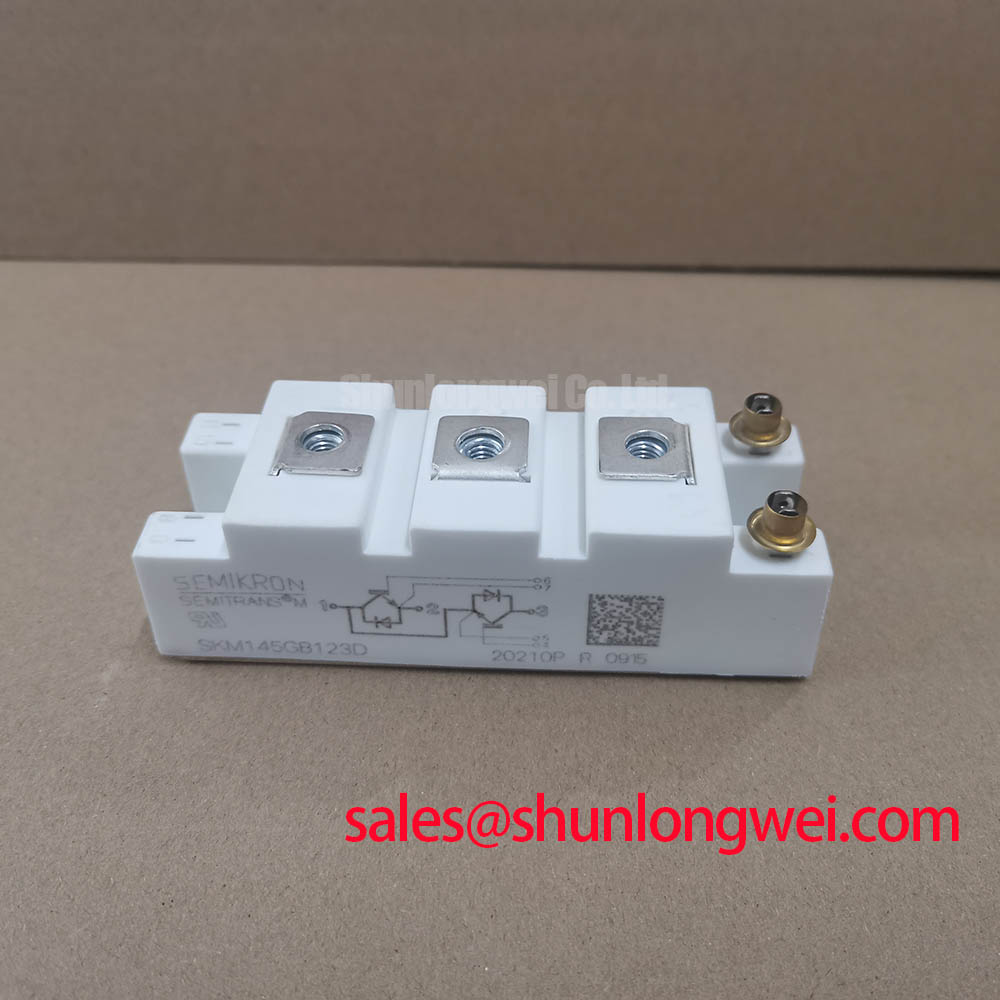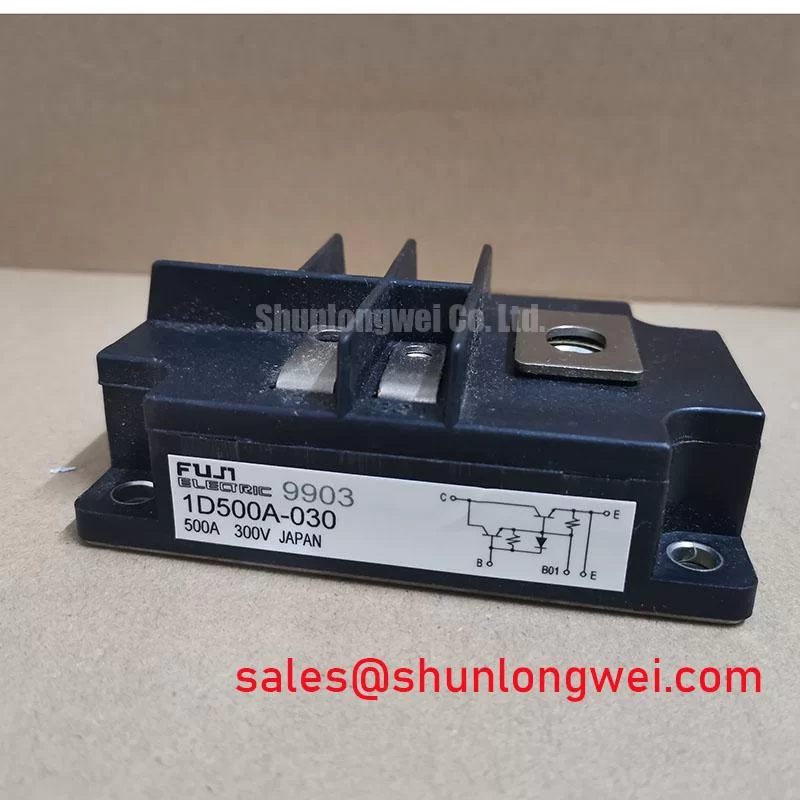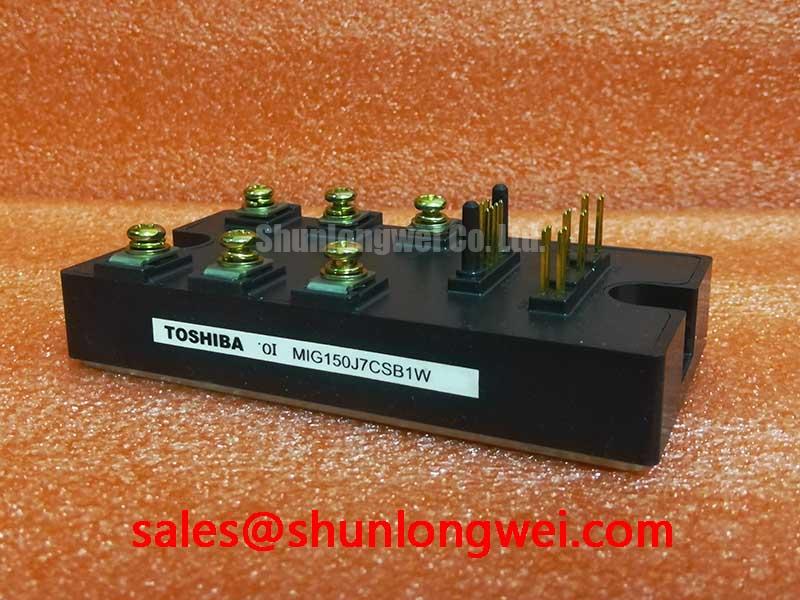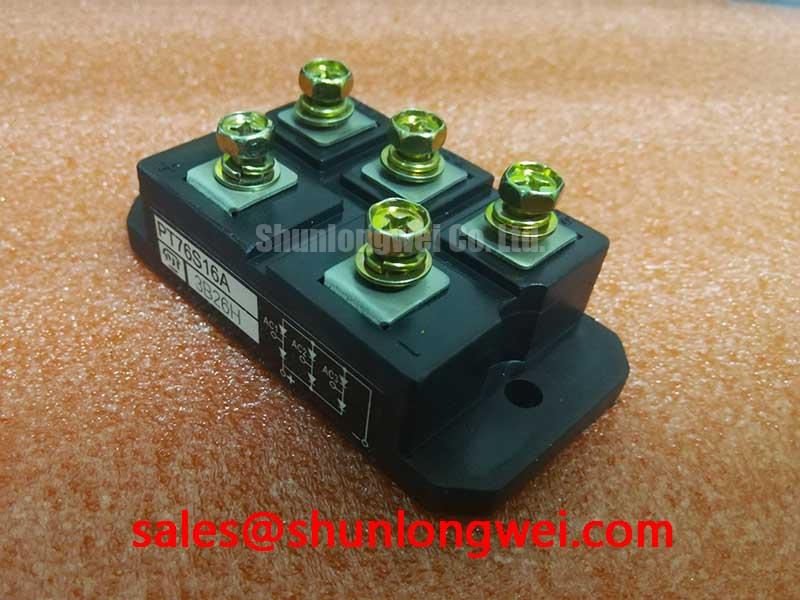SEMITRANS 2 IGBT Module SKM145GB123D | 1200V 145A | Technical Data & Applications
A Foundation for High-Reliability Power Conversion
The SKM145GB123D is a high-performance half-bridge IGBT module from SEMIKRON, engineered for demanding power conversion systems where long-term reliability is paramount. It delivers a robust specification of 1200V | 145A (Tc=80°C) | VCE(sat) 2.1V, built on proven Non-Punch-Through (NPT) IGBT technology. Key engineering benefits include superior thermal management and simplified mechanical assembly. The integrated CAL (Controlled Axial Lifetime) free-wheeling diode features a soft recovery characteristic, which is critical for mitigating voltage overshoots and reducing EMI in switched-mode applications. For industrial motor drives requiring a durable and thermally efficient power stage, this 1200V module provides an optimal design foundation.
Application Scenarios & Value
Engineered for Industrial Uptime and Efficiency
The SKM145GB123D is purpose-built for applications where operational consistency and thermal stability directly impact system-level performance and total cost of ownership. Its robust construction and electrical characteristics make it a cornerstone component in a variety of high-power systems.
- AC Inverter and Servo Drives: The module's half-bridge configuration is the fundamental building block for three-phase inverters. Its low conduction losses and fast, yet soft, switching behavior contribute to higher drive efficiency and precise motor control, which you can learn more about in our guide to IGBTs in robotic servo drives.
- Uninterruptible Power Supplies (UPS): In UPS systems, reliability is non-negotiable. The module's proven NPT IGBTs and high-reliability CAL diodes ensure dependable performance during critical power backup operations, minimizing the risk of failure.
- Welding Power Supplies: The ability to handle high pulse currents and manage thermal cycling is essential in welding applications. The SKM145GB123D's direct-bonded copper baseplate provides an efficient thermal path, ensuring stability even under the demanding load profiles of industrial welding.
The use of an isolated copper baseplate significantly simplifies the design process. It allows multiple modules to be mounted on a single heatsink without complex external isolation layers, reducing assembly time and potential points of failure. For systems that demand higher current capabilities but a similar level of reliability, the SKM300GA123D offers a direct upgrade path within the same product family.
Key Parameter Overview
Defining Electrical and Thermal Performance
The technical specifications of the SKM145GB123D are grounded in providing a predictable and stable operating profile. The following parameters are critical for design engineers evaluating this module for their power conversion architecture.
| Parameter | Symbol | Value | Conditions |
|---|---|---|---|
| Collector-Emitter Voltage | VCES | 1200 V | Tj = 25 °C |
| Continuous DC Collector Current | IC | 202 A | Tcase = 25 °C |
| Continuous DC Collector Current | IC | 145 A | Tcase = 80 °C |
| Collector-Emitter Saturation Voltage | VCE(sat) | 2.1 V (typ.) / 2.5 V (max) | IC = 150 A, Tj = 25 °C, VGE = 15 V |
| Gate-Emitter Threshold Voltage | VGE(th) | 5.5 V (typ.) | IC = 6 mA |
| Thermal Resistance, Junction to Case | Rth(j-c) | 0.14 °C/W (per IGBT) | - |
| Thermal Resistance, Junction to Case | Rth(j-c) | 0.25 °C/W (per diode) | - |
| Maximum Junction Temperature | Tjmax | 150 °C | Under switching conditions |
Download the SKM145GB123D datasheet for detailed specifications and performance curves.
The low thermal resistance, Rth(j-c), is a critical parameter for thermal design. A lower value signifies a more efficient path for heat to travel from the active silicon die to the module's case. What is the benefit of its low Rth(j-c)? It allows for cooler chip operation or higher power output for a given heatsink design. Think of it like a wider pipe for heat; the wider the pipe (lower the resistance), the more heat can flow away easily, preventing a "traffic jam" that would cause the junction temperature to rise dangerously.
Industry Insights & Strategic Advantage
Meeting the Demand for Robust and Serviceable Power Electronics
In the landscape of industrial automation and renewable energy, the emphasis is increasingly on system longevity and minimizing unplanned downtime. Components like the IGBT Module are no longer evaluated solely on their initial performance but on their ability to sustain that performance over years of service. The SKM145GB123D, part of the SEMITRANS 2 family, directly addresses this need. Its design philosophy is rooted in proven, mature technologies rather than cutting-edge, but less field-tested, alternatives.
The choice of Semikron CAL Diode technology is a strategic decision that balances switching speed with system reliability. As inverter designs push for higher switching frequencies to reduce the size of magnetic components, the diode's recovery behavior becomes a major source of electromagnetic interference (EMI) and stress on the IGBT. The "soft" recovery of the CAL diode minimizes high-frequency ringing and voltage spikes, simplifying the design of snubber circuits and improving the system's overall electromagnetic compatibility (EMC)—a crucial factor for meeting international standards like those from the IEC.
Frequently Asked Questions (FAQ)
What are the primary advantages of the CAL free-wheeling diode used in the SKM145GB123D?
The CAL (Controlled Axial Lifetime) diode is engineered for a "soft" recovery characteristic. This reduces voltage overshoots and electromagnetic interference (EMI) during switching, which simplifies filter design and improves the overall reliability and EMC performance of the power converter.
Is the SKM145GB123D suitable for paralleling to achieve higher current output?
Yes, the module is designed to support parallel operation. The NPT IGBT technology used features a positive temperature coefficient for VCE(sat), meaning that as a chip gets hotter, its on-state resistance increases slightly. This characteristic helps to naturally balance current sharing between parallel-connected modules without requiring complex external circuitry.
What is the recommended gate drive voltage for this IGBT module?
The datasheet specifies optimal performance with a gate-emitter voltage (VGE) of +15V for turn-on and typically between -8V and -15V for turn-off. Using a negative voltage for turn-off provides a strong margin against unwanted turn-on caused by noise or Miller capacitance, enhancing system immunity.
How does the isolated baseplate benefit the mechanical design?
The Al2O3 DCB (Direct Copper Bonded) substrate provides excellent electrical isolation between the power terminals and the copper baseplate. This allows engineers to mount the module directly onto a grounded heatsink without needing additional, thermally resistive isolation pads, which simplifies assembly and improves the overall thermal transfer efficiency.
A Strategic Component for Long-Lifecycle Industrial Systems
The SKM145GB123D IGBT module represents a strategic choice for engineers developing power systems that prioritize operational robustness and service life over pushing the limits of switching frequency. Its balanced design, centered on proven NPT and CAL diode technologies, provides a reliable and thermally manageable foundation. This focus makes it an ideal component for building the next generation of durable industrial drives, high-availability UPS systems, and efficient renewable energy converters where long-term, predictable performance is the most valuable asset.


















